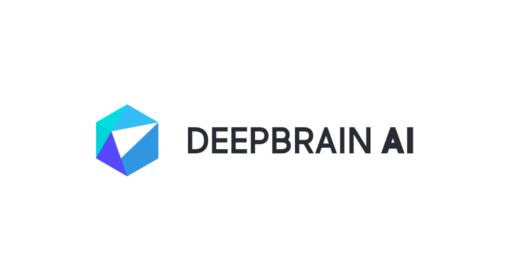The future of 3D printing is heavily reliant on the impact of AI. We must recognize and embrace the significant role that AI technology plays in the advancement of 3D printing. Ignoring this crucial aspect may lead to missed opportunities and hinder this industry’s potential growth and development.
Therefore, it is essential to understand and implement AI strategies to ensure a prosperous future for 3D printing. AI plays a crucial role in the future of 3D printing. Neglecting it would mean missing out on valuable opportunities. Effective AI strategies are essential for success.
When it comes to 3D printing, precision is key. The design and execution of a print should be accurate in order to avoid costly errors and wasted materials.
This is where artificial intelligence (AI) comes in. AI-powered 3D printers are able to create prints with greater accuracy and detail than ever before, thanks to their ability to learn from past failures and successes.
In addition, AI-assisted software can help identify problems with a design before it goes into production, saving time and money in the long run.
How AI is making 3D printing more efficient
The rise of artificial intelligence has coincided with a number of different industrial revolutions. One such revolution is 3D printing, which has been made more efficient thanks to AI.
The technology behind 3D printing has come a long way in recent years, and AI has played a role in making it more accurate and precise. By using algorithms, 3D printers can now produce prints that are much closer to the original design than ever before.
This is thanks to the ability of AI to quickly identify errors and make corrections on the fly.
The benefits of using AI to improve 3D prints (better quality, functionality, etc.)
3D printing technology has been around for a while now. Still, it’s only recently that artificial intelligence (AI) has started to be used in the process.
AI can be used in 3D printing in a few different ways: first, by helping to design the object that will be printed; second, by optimizing the print itself; and third, by inspecting the finished product.
Using AI to design objects for 3D printing can result in prints with intricate details and smoother surfaces.
By reducing the number of layers that are used to print an object, the file size can be reduced, and the print time can be cut down to a fraction of the original.
Some of the ways in which AI can optimize prints are achieved by 3D printers that aren’t designed to have AI installed. These printers can collect data from the objects being printed, which can then be used to optimize future prints. This data can include things like layer height, temperature, and speed.
*When 3D prints are optimized to produce objects with the least amount of material required, the cost of the part is also reduced. This is because there are fewer layers to print.
These two methods of reducing the time and cost of 3D printing fall under the category of “what” something is printed. However, there is also a second category of optimizing, which falls under the label “how” something is printed.
** This method is the focus of this section.**
MULTIPLE-PART PRINTING: PRINTING INDIVIDUAL PARTS
While there are limits to 3D printing, the process has many advantages over other manufacturing methods.
One particularly noteworthy advantage is that parts can be printed individually. This allows a manufacturer to create a single part at a time and then assemble the parts into a complete product.
This method is referred to as individual part printing or additive manufacturing (AM). This method is also referred to as selective laser sintering (SLS).
Advantages Disadvantages Parts
can be printed individually, which allows for the creation of a single part at a time. Individual part printing does not create a complex physical structure, so it is often used for applications that require complicated geometries but do not require high strength or structural integrity.
Applications Individual
part printing is used in both industrial and consumer applications. In the industrial sector, individual part printing is used to manufacture tooling for industry and small batches of various metals, ceramics, and plastics. In the consumer sector, individual part printing is mainly used for small products like jewelry.
Technology Individual
part printing generally uses an SLA 3D printer, which uses a laser to sinter a photosensitive resin to create a solid object.
The laser traces cross-sections of the object layer by layer, with each layer cured by a UV light to solidify the resin, and the unprinted resin is washed away with a water jet or drained out of the box.
This process is repeated until the object is finished. SLA printers operate on the same basic principle as 3D printing with inkjet printers. First, a computer design is sliced into two-dimensional layers and combined to form a digital file.
Two-dimensional digital images are then printed layer by layer. A UV laser traces the cross-sections of the object layer by layer, with each layer cured by a UV light to solidify the resin, and the unprinted resin is washed away with a water jet or drained out of the box. This process is repeated until the object is finished.
Printing whole three-dimensional objects is not really about bringing 3D printing into the home yet. Rather, it is about pushing the boundary of product design and manufacturing.
Much like how the first 2D printers were never designed to print out complete artwork, today’s stereolithographic 3D printers are not made to print out an entire object.
But equally, as 2D printers progressed to print out larger and more complex images, so will 3D printers.
3D printing is a process of creating three-dimensional objects from a digital file. It has the potential to revolutionize manufacturing and create new opportunities for businesses and individuals.
However, there are still some challenges to 3D printing, such as the need for high-quality 3D models and the time it takes to print objects.
Artificial intelligence (AI) is rapidly developing and is now being used to improve the quality of 3D prints. AI can be used to generate 3D models, optimize the printing process, and inspect prints for defects.
Generating 3D models
AI can be used to generate 3D models from scratch or to modify existing models. This can save time and effort for designers, and it can also help to create more complex and realistic models.
For example, AI can be used to generate 3D models of human organs for medical research. This can help doctors to better understand diseases and develop new treatments.
Optimizing the printing process
AI can be used to optimize the printing process, resulting in faster, more efficient, and more accurate prints. AI can also be used to identify and correct errors in prints.
For example, AI can be used to optimize the printing parameters for a specific 3D model. This can help to reduce the time it takes to print an object and improve the quality of the print.
Inspecting prints for defects
AI can be used to inspect 3D prints for defects. This can help to identify and correct errors early in the process, saving time and money.
For example, AI can be used to inspect 3D prints for cracks and other defects. This can help to ensure that the prints are safe and meet the required standards.
Benefits of using AI for 3D printing
There are many benefits to using AI for 3D printing. Some of the most notable benefits include:
- Increased productivity: AI can help to automate many of the tasks involved in 3D printing, such as design, manufacturing, and post-processing. This can free up users to focus on other tasks, such as ideation and creativity.
- Improved quality: AI can help to improve the quality of 3D prints by identifying and correcting errors early in the process. This can result in more consistent and accurate prints.
- Reduced costs: AI can help to reduce the costs of 3D printing by automating tasks and improving the quality of prints. This can make 3D printing more accessible to businesses and consumers.
- Expanded applications: AI can help to expand the applications of 3D printing by enabling the creation of new and innovative products and prototypes. This can lead to new opportunities for businesses and individuals.
Conclusion,
AI is a powerful tool that has the potential to revolutionize 3D printing. As AI continues to develop, we can expect to see even more innovative and groundbreaking applications for 3D printing. AI has the potential to make 3D printing faster, more efficient, more accessible, and more versatile.
Thanks,
Bullwinkle


Thank you, Bullwinkle, for your insightful article on the transformative role of AI in the future of 3D printing. Your comprehensive overview highlights the significant impact that AI technology has on enhancing the precision, efficiency and overall quality of 3D prints.
The integration of AI algorithms in 3D printers allows for greater accuracy and detail, learning from past failures and successes to continually improve the printing process. Additionally, AI-assisted software helps in identifying design problems beforehand, ultimately saving time and resources by preventing costly errors.
I appreciate how you discussed the various ways AI is optimizing 3D printing. From generating intricate and realistic 3D models to optimizing the printing process for faster and more efficient production, AI plays a crucial role. Furthermore, the ability of AI to inspect prints for defects ensures the final product meets the required standards and is safe for use.
You’re welcome! I’m glad you found my article insightful. I agree that AI is having a transformative impact on the future of 3D printing. As you mentioned, AI is being used to improve the precision, efficiency, and overall quality of 3D prints. This is leading to new possibilities for 3D printing in a wide range of industries, from manufacturing to healthcare. Here are a few specific examples of how AI is being used to improve 3D printing:
Generating intricate and realistic 3D models: AI can be used to generate intricate and realistic 3D models from 2D images. This is useful for a variety of applications, such as creating prototypes for new products or designing custom medical implants.
Optimizing the printing process: AI can be used to optimize the printing process for faster and more efficient production. This can save businesses time and money, and it can also help to ensure that the final product meets the required standards.
Inspecting prints for defects: AI can be used to inspect prints for defects, such as missing or misaligned layers. This can help to prevent costly errors and ensure that the final product is safe for use.
I believe that AI has the potential to revolutionize 3D printing. As AI technology continues to develop, I expect to see even more innovative and groundbreaking applications for 3D printing in the years to come.